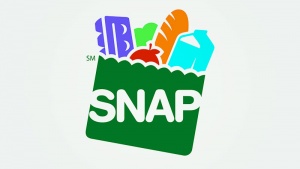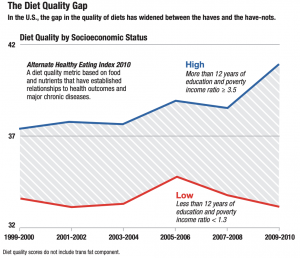User:Haasea
There are many federal nutrition programs within the United States that aim to increase food access to individuals in need. One of the most prominent such programs is the Supplemental Nutrition Assistance Program (SNAP), formerly known as Food Stamps, which provides monetary nutrition benefits to supplement food budgets of families in need to move towards self-sufficiency. This program reached 38 million people nationwide in 2019, of which more than 66% were in families with children; average monthly SNAP benefits for each household member ranged from $100-200 depending on location [1]. This program and other similar federal nutrition programs can be understood as an information technology because it uses a mass formula which is essentially an algorithm that could be automated to determine individual and family eligibility.
Contents
Overview
Eligibility
As an information technology, SNAP is rooted in the eligibility of benefits, from which the uncertainty of some ethics stem. The determination of eligibility follows a set of strict federal rules. To be eligible for benefits, a household’s income and resources must meet three core criteria: gross monthly income must be at or below 130 percent of the poverty line, net income must be at or below the poverty line, and assets must fall below certain limits. Additionally, there are certain groups of people who are not eligible for SNAP benefits regardless of their income, including individuals on strike, unauthorized immigrants, and some lawfully present immigrants [2]. The mass formula for determining eligibility therefore skips many people that do not numerically qualify.
Design Problems
In Context with COVID-19
Until recently, students in college were not eligible for SNAP. However, some eligibility rules were temporarily expanded in light of the ongoing pandemic. Examples of these rules include the Consolidated Appropriations Act 2021 which temporarily expanded eligibility to higher education students if they meet one of two new criteria [3].
Ethical Concerns
Failure to Meet Needs
There are many cases of individuals and families in need of food that do not qualify for SNAP based on the mass formula algorithm. More than 41 million people are “food insecure”, meaning that they do not have consistent access to adequate food, and roughly 1 in 4 of these individuals are not likely to be eligible for programs such as SNAP. Having these hard guidelines for eligibility means that there are some cases where individuals miss the qualification by a few dollars over the limit [4].
Decision Power
These federal nutrition programs can be thought of in context of a “weapon of math destruction”. Cathy O’Neil, coiner of this term, points out that these WMDs can combine data injustice and systemic inequality to trap poor people in negative “feedback loops” [5].
Health Impacts
Additionally, determination from this information technology has a compounding effect on the health and well-being of individuals. Failure to meet qualifications for SNAP and other federal nutrition programs means that many individuals have to make the most of their money by skipping meals, buying the cheapest (processed) foods, and not having the support to purchase more expensive fresh foods such as fruits and vegetables [4]. These cheaper foods are less nutritious than the latter and can put individuals at higher risks for health problems. Children living in low-income families have worse health outcomes on average than other children on a number of indicators such as obesity and mental health [6].
References
- ↑ Lauren Hall “A Closer Look at Who Benefits from SNAP: State-by-State Fact Sheets” (Center on Budget and Policy Priorities, Jan. 12, 2021)
- ↑ “A Quick Guide to SNAP Eligibility and Benefits” (Center on Budget and Policy Priorities, Sept. 01, 2020)
- ↑ Students (U.S. Department of Agriculture)
- ↑ 4.0 4.1 Kathryn Vasel “Too poor to afford food, too rich to qualify for help” (CNN Business, May 30, 2018)
- ↑ O’Neil, C. (2016). Introduction. In Weapons of Math Destruction: How Big Data Increases Inequality and Threatens Democracy. New York: Crown Publishing Group.
- ↑ Gupta, Rita Paul-Sen et al. “The impact of poverty on the current and future health status of children.” Paediatrics & child health vol. 12,8 (2007): 667-72. doi:10.1093/pch/12.8.667

